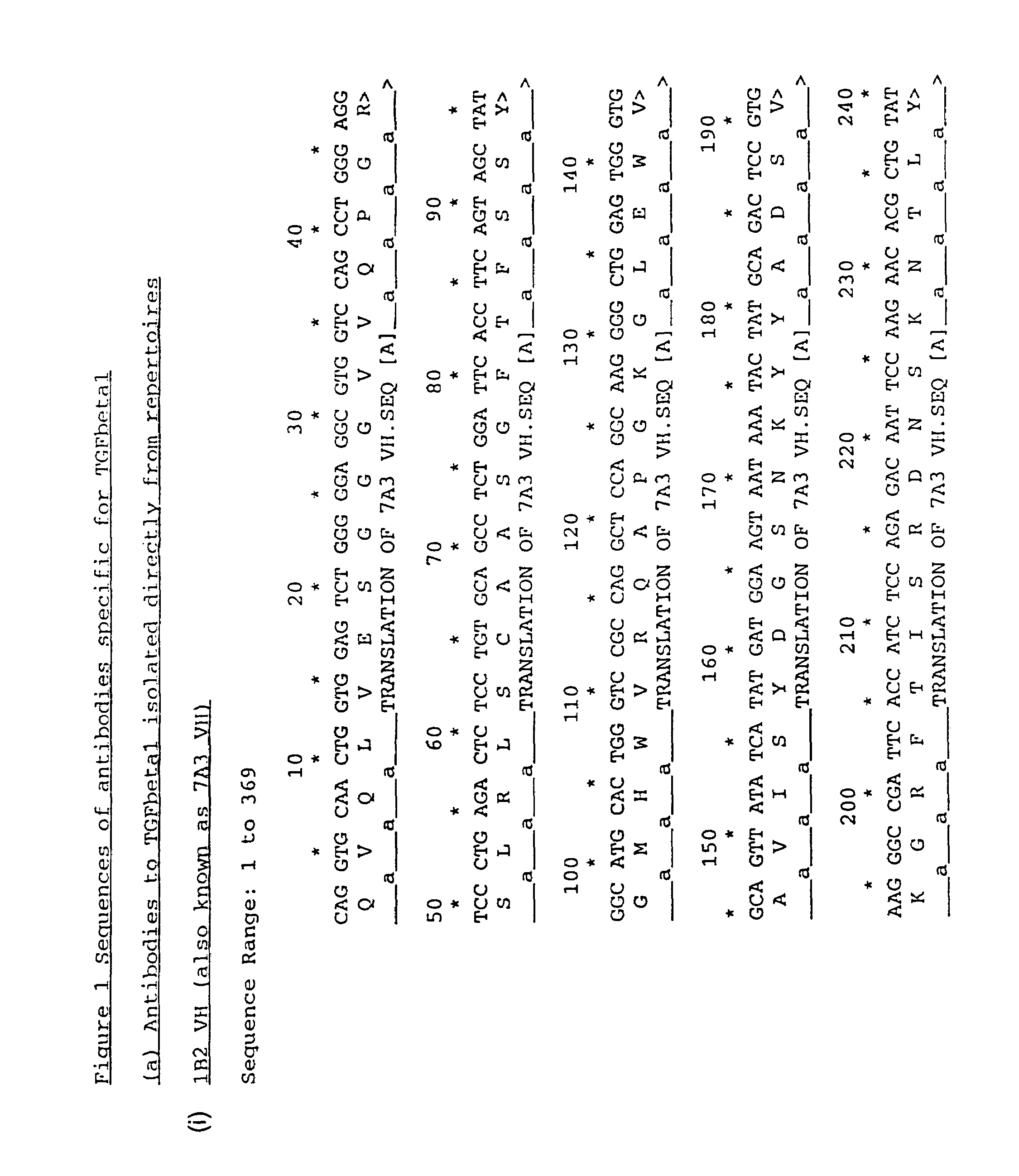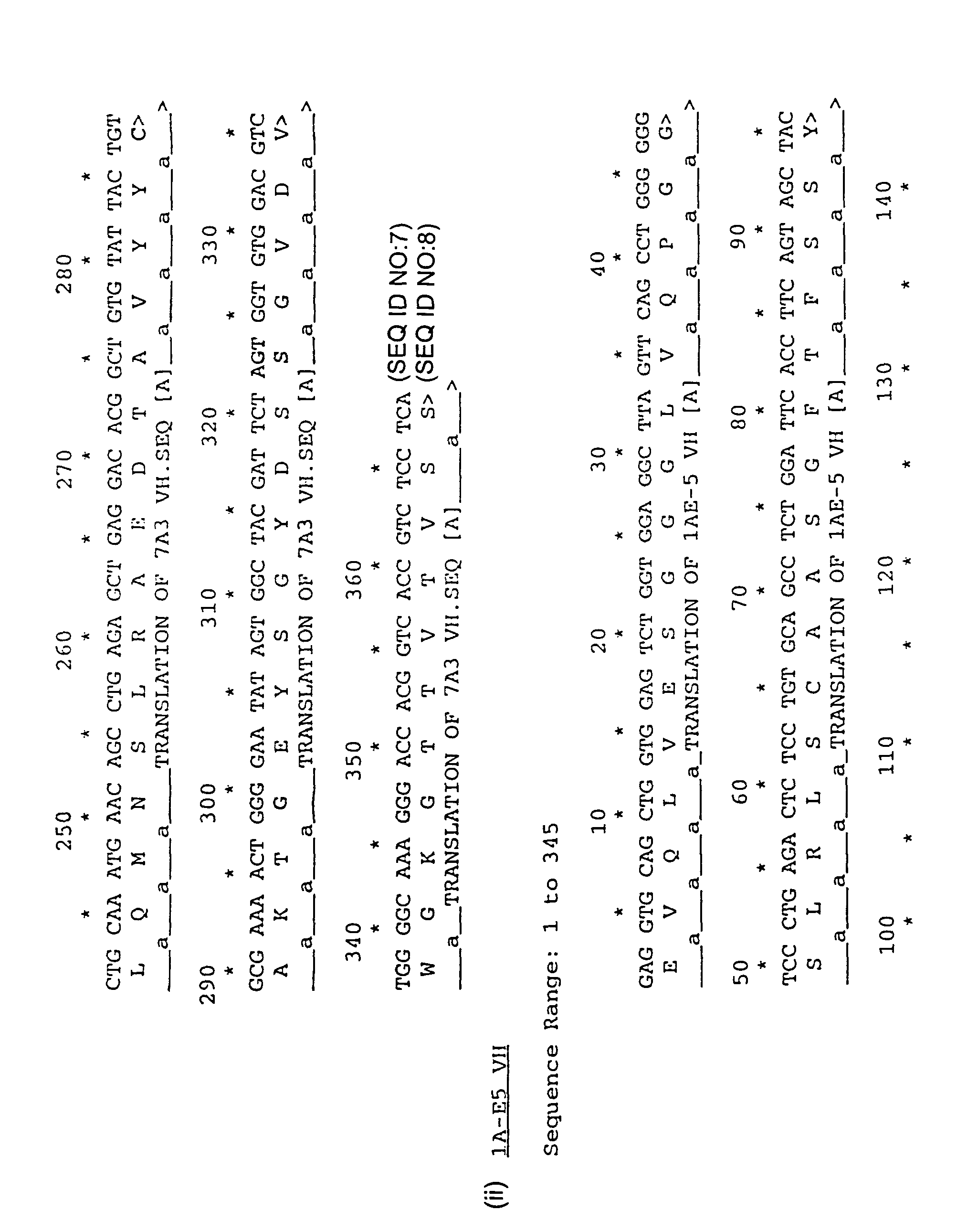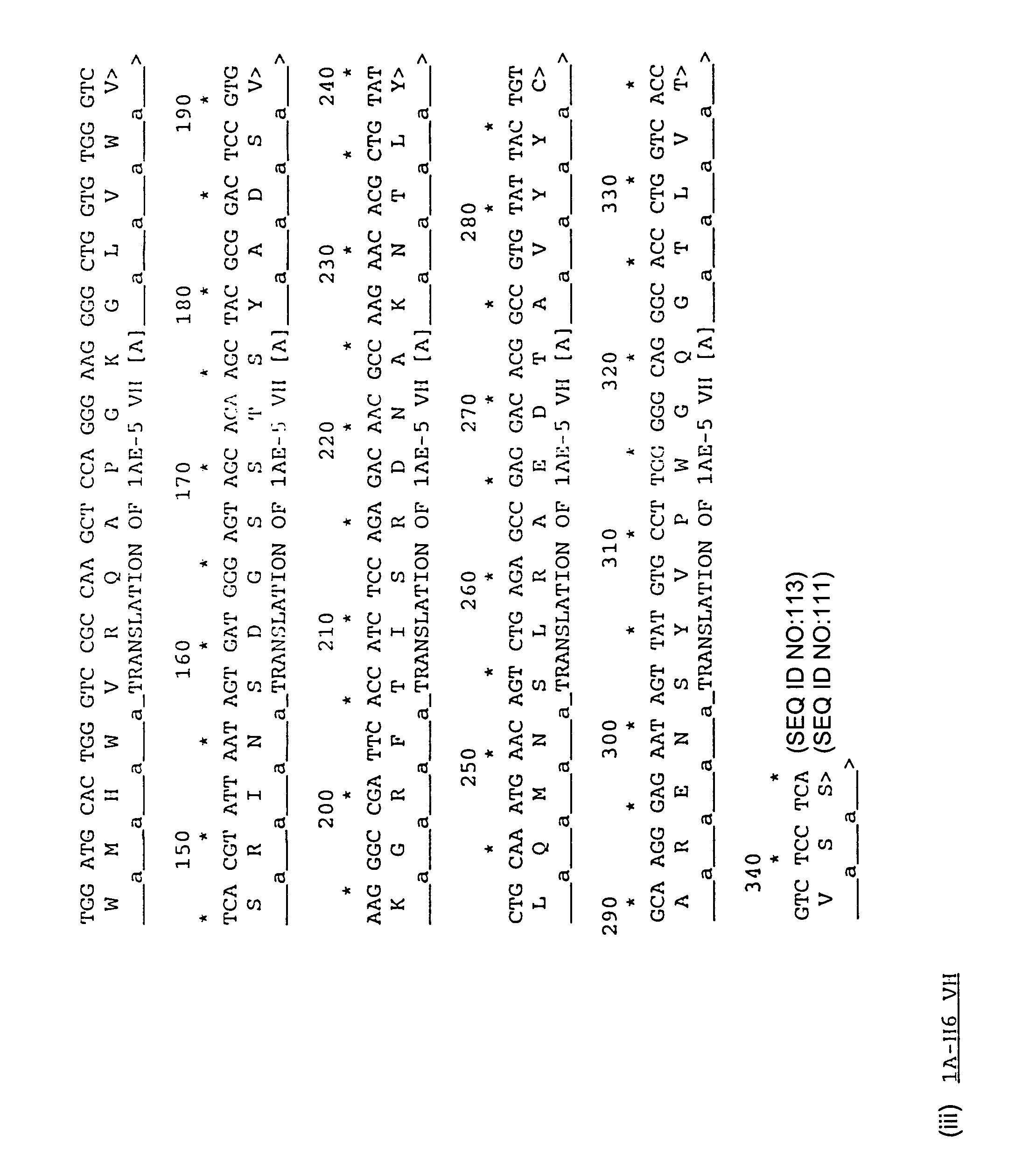Human antibodies specific for TGFbeta2
a technology of transforming growth factor and human antibody, which is applied in the field of human antibodies specific for tgfbeta2, can solve the problems of ethical problems in vaccinating humans, difficult to raise human antibodies to human self-antigens, and difficult to raise antibodies in mice against human tg
- Summary
- Abstract
- Description
- Claims
- Application Information
AI Technical Summary
Problems solved by technology
Method used
Image
Examples
example 1
Isolation and Characterisation of Antibodies Binding to TGFβ1 and TGFβ2
Identification and Characterisation of Antibodies to Human TGFβ1 by Selection of Naive and Synthetic Phage Antibody Repertoires
Antibody Repertoires
[0171]The following antibody repertoires were used:[0172]1. Peripheral blood lymphocyte (PBL) library derived from unimmunized human (Marks, J. D., Hoogenboom, H. R. Bonnert, T. P., McCafferty, J., Griffiths, A. D. & Winter, G. (1991) J. Mol. Biol. 222, 581-597).[0173]2. Synthetic library (Nissim, A., Hoogenboom, H. R., Tomlinson, I. M., Flynn, G., Midgley, C., Lane, D. and Winter, G. (1994) EMBO J. 13, 692-698) derived from cloned human germline VH genes and synthetic CDR3s with a fixed light chain.[0174]3. Tonsil library derived from the tonsils of unimmunised humans. Tonsil B cells were isolated from freshly removed (processed within 2 hours) whole tonsils provided by Addenbrookes Hospital, Hills Road, Cambridge, U.K. Each tonsil was processed as follows. Tonsils we...
example 2
Construction of Cell Lines Expressing Whole Antibodies
[0238]For the construction of cell lines expressing IgG4 antibodies, variable domains were cloned into vectors expressing the human gamma 4 constant region for the VH domains or the human kappa or lambda constant regions for the VL domains.
[0239]To construct the whole antibody, 27C1 / 10A6 IgG4 (specific for TGFβ1), 27C1 VH DNA was prepared from the clone isolated above, in example 1. The VH gene was amplified by PCR using the oligonucleotides VH3BackSfiEu and VHJH6ForBam (Table 1) with cycles of 1 min at 94° C., 1 min at 55° C., 1.5 min at 72° C. Following digestion with SfiI and BamHI, the VH gene was cloned into the vector vhcassette2 (FIG. 5) digested with SfiI and BamHI. Ligated DNA was transformed into E. coli TG1. Ampicillin resistant colonies were obtained and those containing the correct insert identified by DNA sequencing.
[0240]Plasmid DNA from these colonies was prepared and the DNA digested with HindIII and BamHI. The H...
example 3
Neutralisation by Antibodies of the Inhibitory Effect of TGFβ1 and TGFβ2 on Cell Proliferation
[0250]The neutralising activity of the antibodies described in examples 1 and 2 were tested in a modification of a bioassay for TGFβ as described by Randall et al. (1993) J. Immunol Methods 164, 61-67. This assay is based on the ability of TGFβ1 and TGFβ2 to inhibit the interleukin-5 induced proliferation of the erythroleukaemia cell line, TF1 and being able to reverse this inhibition with specific TGFβ antibodies.
Method
Cells and Maintenance
[0251]The human erythroleukaemia cell line TF1 was grown in RPMI 1640 medium supplemented with 5% foetal calf serum, penicillin / streptomycin and 2 ng / ml rhGM-CSF in a humidified incubator containing 5% CO2 at 37° C. Cultures were passaged when they reached a density of 2×105 / ml and diluted to a density of 5×105 / ml.
Cytokines and Antibodies
[0252]rhGM-CSF and rhIL-5 were obtained from R&D systems, rhTGFβ2 was obtained AMS Biotechnology. Rabbit anti TGFβ2 an...
PUM
| Property | Measurement | Unit |
|---|---|---|
| dissociation constants | aaaaa | aaaaa |
| dissociation constant | aaaaa | aaaaa |
| dissociation constant | aaaaa | aaaaa |
Abstract
Description
Claims
Application Information
 Login to View More
Login to View More - R&D
- Intellectual Property
- Life Sciences
- Materials
- Tech Scout
- Unparalleled Data Quality
- Higher Quality Content
- 60% Fewer Hallucinations
Browse by: Latest US Patents, China's latest patents, Technical Efficacy Thesaurus, Application Domain, Technology Topic, Popular Technical Reports.
© 2025 PatSnap. All rights reserved.Legal|Privacy policy|Modern Slavery Act Transparency Statement|Sitemap|About US| Contact US: help@patsnap.com



